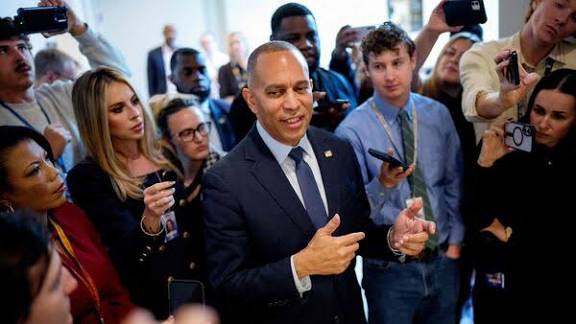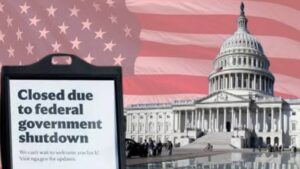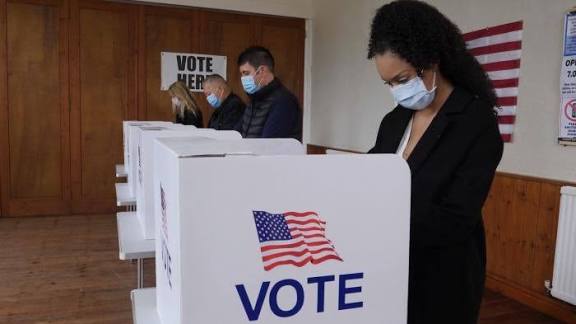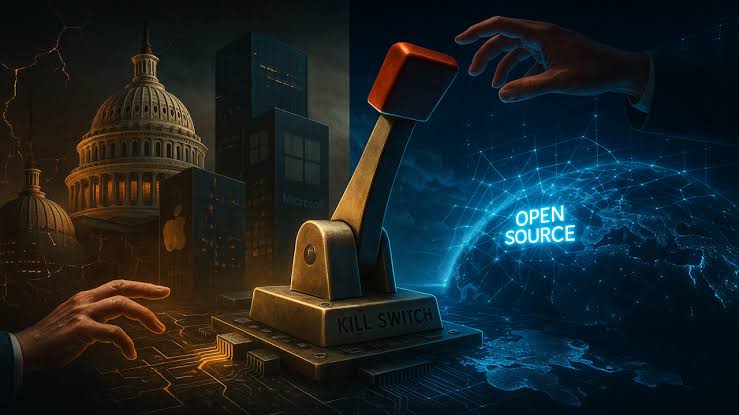US Government Shutdown Deepens: Millions Lose Access to Federal Services

Stay ahead of the latest trends and regulations with Private Fund CFO Insights. Exclusive industry news, expert insights and a thriving community. Today we will discuss about
US Government Shutdown Deepens: Millions Lose Access to Federal Services
The United States is facing one of the most disruptive federal government shutdowns in recent history. What began as a routine budgetary disagreement has escalated into a nationwide crisis, with millions of Americans now experiencing the ripple effects. As federal agencies shutter, workers go without pay, and key public services slow to a crawl, the consequences are becoming increasingly severe. The shutdown continues to deepen, and with no immediate resolution in sight, its economic, social, and political costs are growing by the day.
1. The Scope and Scale of the Shutdown

1.1 How the Shutdown Began
The shutdown began when Congress was unable to agree on government funding for the new fiscal year. Deep partisan divisions over budget priorities—especially regarding healthcare tax credits and other policy provisions—prevented lawmakers from passing necessary appropriations bills. As a result, major federal agencies were legally required to halt or reduce operations.
1.2 Impact on the Federal Workforce
The shutdown has led to an unprecedented furlough of hundreds of thousands of federal employees. Estimates suggest that 750,000 to 900,000 federal workers have been placed on unpaid leave, while hundreds of thousands more are reporting to work without pay because their functions are legally classified as “essential.”
Adding to the anxiety, the Office of Management and Budget has instructed agencies to prepare for the possibility of permanent layoffs. This represents a dramatic shift in how shutdowns have historically been handled and raises serious concerns about the long-term capability and stability of federal institutions.
2. What Services Are Affected
2.1 Essential Services Still Operating — But Under Pressure
Certain government functions that protect public safety or maintain critical infrastructure continue to operate. However, these services are under immense strain due to staffing shortages and lack of pay.
These essential services include:
Air travel safety: Air traffic controllers and TSA staff continue working unpaid to keep airports operational.
Border security: Border Patrol agents, customs officers, and immigration enforcement personnel remain on duty.
Military operations: Active-duty service members continue their roles but face delayed paychecks.
Veterans’ healthcare: Medical care for veterans continues, though some administrative services are slowed.
Social Security and Medicare: Benefit payments continue, but administrative processing is delayed, causing longer wait times for appeals, document processing, and applications.
2.2 Services That Are Closed or Severely Limited
Other agencies deemed “non-essential” have slowed or stopped operations entirely:
National Parks: Many parks remain physically open but without rangers, maintenance, or visitor services. Some facilities have closed due to sanitation issues or safety concerns.
Scientific and medical research: New research trials at major health institutes are paused, and ongoing work is delayed.
Food and drug oversight: Regulatory reviews of new medicines and medical devices are on hold.
Public health surveillance: Critical disease monitoring programs are weakened due to furloughs.
Immigration services: Visa processing, asylum hearings, and immigration courts face delays.
Labor statistics and economic data: Key monthly reports may be delayed, hindering businesses, economists, and policymakers.
3. Economic Fallout
3.1 Direct Impact on National Economy
Economists warn that the shutdown could inflict billions of dollars in losses each week. Prolonged shutdowns historically reduce GDP growth, and a shutdown of this magnitude could lead to permanent economic damage.
Past shutdowns offer a clear warning: even after government operations resume, the economy is unlikely to fully regain lost productivity, consumer spending, or halted investments.
3.2 Ripple Effects on the Private Sector
The shutdown’s impact isn’t limited to federal workers. Private industries are beginning to feel the pressure:
Businesses dependent on federal contracts are losing revenue and struggling to pay their own employees.
Tourism industries near national parks and museums are losing customers, causing layoffs in local communities.
Financial markets face growing uncertainty, as investors worry about prolonged dysfunction in Washington.
Small businesses awaiting federal loans or permits are stuck in limbo, blocking expansion plans and delaying hiring.
4. Human Cost: How Families Are Affected
4.1 Financial Hardship for Federal Workers
Hundreds of thousands of federal workers are missing paychecks, leaving many struggling to cover basic expenses. Many families rely heavily on regular income cycles and are now facing:
Difficulty paying rent, mortgages, or utilities
Increased credit card debt or loan delinquencies
Food insecurity, leading to higher demand on community food banks
Mental stress and uncertainty about future employment
4.2 The Back Pay Controversy
Traditionally, employees furloughed during shutdowns have received back pay once the government reopened. However, conflicting interpretations of budget laws have raised doubts about whether back pay is guaranteed this time. This uncertainty has intensified frustration and anxiety among workers, many of whom already feel overburdened and undervalued.
4.3 Threat of Permanent Layoffs
The possibility of large-scale layoffs has sent shockwaves throughout the federal workforce. If implemented, these reductions would not only devastate thousands of families but could also permanently weaken government agencies that rely on experienced staff to operate effectively.
5. Impact on Public Services, Health, and Safety
5.1 Public Health Risks
Federal public health agencies play a critical role in monitoring disease outbreaks, coordinating research, and issuing health guidance. With major staffing reductions:
Disease tracking systems may miss early signs of outbreaks
Research into emerging health threats slows dramatically
Approval and oversight of medical products may face long delays
This lack of capacity raises significant concerns, especially during periods when public health threats can emerge unexpectedly.
5.2 Environmental and Infrastructure Oversight
Agencies responsible for environmental protection and infrastructure safety are operating at minimal levels. This results in:
Fewer inspections of industrial sites
Delayed environmental compliance checks
Paused infrastructure grants and planning projects
Reduced oversight of hazardous materials and pollution incidents
The long-term consequences could include environmental damage and weakened infrastructure resilience.
5.3 Immigration and Legal Systems Slowing Down
Immigration courts already face large backlogs, and the slowdown is making the situation worse. Visa applicants, businesses dependent on foreign workers, and asylum seekers are all experiencing significant delays.
Civil courts are also scaling down operations, resulting in postponed hearings, delayed rulings, and growing caseloads.
6. Political Landscape and Negotiation Deadlock
6.1 Why Negotiations Stalled
Political divisions in Washington have deepened, with lawmakers refusing to compromise on key funding priorities. The current standoff centers around issues such as:
Healthcare tax credit disputes
Budget allocation for regulatory agencies
Government workforce restructuring proposals
Neither side appears willing to concede, making it difficult to pass even a temporary funding measure to reopen the government.
6.2 Public Pressure and Declining Trust
The longer the shutdown lasts, the more public frustration grows. Many Americans view the shutdown as a failure of leadership, and trust in government institutions is declining. Public opinion polls often show widespread dissatisfaction with both political parties during shutdowns.
Communities dependent on federal services — such as rural areas, military towns, and regions with large federal workforces — are experiencing the consequences most acutely.
7. Lessons from the Past and Future Risks
7.1 Lessons from Previous Shutdowns
History shows that government shutdowns:
Cause lasting economic damage
Reduce public confidence in government
Lower worker morale
Disrupt essential public programs
The current shutdown appears poised to surpass previous ones in length and severity.
7.2 Long-Term Risks If Shutdowns Become Routine
If shutdowns become a recurring political strategy, the United States could face significant long-term risks:
Erosion of government capacity as experienced workers leave.
Reduced public safety due to gaps in oversight and regulatory enforcement.
Loss of global credibility, affecting foreign relations and investment.
Weaker economic stability, especially in industries dependent on federal coordination.
Growing political polarization as shutdowns become leverage tools rather than last resorts.
8. What’s at Stake for Ordinary Americans
For many Americans, the shutdown is not just a political issue — it is a direct disruption of daily life. The consequences include:
Reduced access to healthcare research and public health information
Delayed benefits and administrative services
Economic uncertainty in regions reliant on federal funding
Longer delays at airports due to understaffing
Limited access to national parks and cultural institutions
As the shutdown drags on, millions of people are feeling the effects firsthand.
9. Potential Ways Out of the Crisis
There are several potential paths to ending the shutdown, although none are guaranteed:
1. A Short-Term Funding Bill
Congress could pass a temporary measure to reopen the government while negotiations continue. However, disagreements over provisions like back pay and agency funding levels have delayed this option.
2. A Comprehensive Budget Deal
A long-term funding agreement would fully reopen the government but requires extensive compromise. Given current political tensions, this may be challenging.
3. Legislative Clarity on Back Pay
Lawmakers could pass a simple bill guaranteeing back pay to all furloughed workers, easing some economic strain even before the shutdown ends.
4. Structural Reforms
Some political leaders are pushing for budgetary reforms to prevent future shutdowns. However, these proposals vary widely and lack consensus.
Conclusion
The deepening U.S. government shutdown is far more than a political standoff—it is a crisis affecting the economy, public health, national security, and the daily lives of millions. With hundreds of thousands of workers furloughed or working without pay, critical services disrupted, and billions in economic output at risk, the stakes could not be higher.
As negotiations in Washington remain stalled, Americans across the country are left in uncertainty. The longer the shutdown continues, the deeper the damage becomes—eroding trust, weakening institutions, and challenging the resilience of the nation.
A swift resolution is essential, not only to end the immediate disruption but to restore stability and confidence in the federal government.
How useful was this post?
Click on a star to rate it!
Average rating 0 / 5. Vote count: 0
No votes so far! Be the first to rate this post.
About the Author
usa5911.com
Administrator
Hi, I’m Gurdeep Singh, a professional content writer from India with over 3 years of experience in the field. I specialize in covering U.S. politics, delivering timely and engaging content tailored specifically for an American audience. Along with my dedicated team, we track and report on all the latest political trends, news, and in-depth analysis shaping the United States today. Our goal is to provide clear, factual, and compelling content that keeps readers informed and engaged with the ever-changing political landscape.




